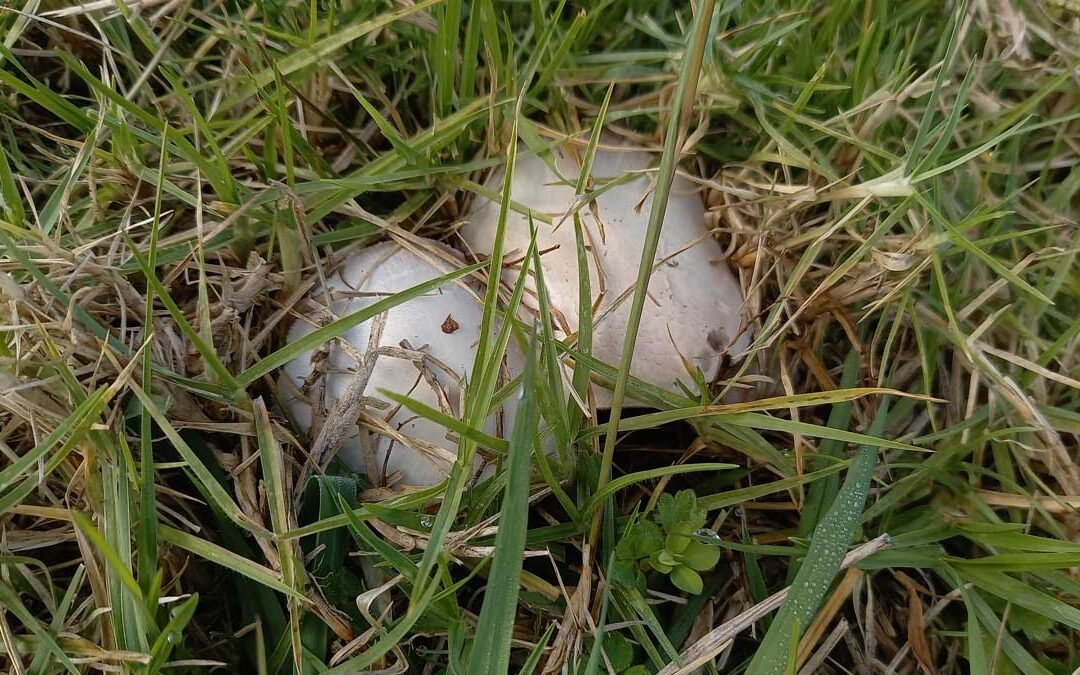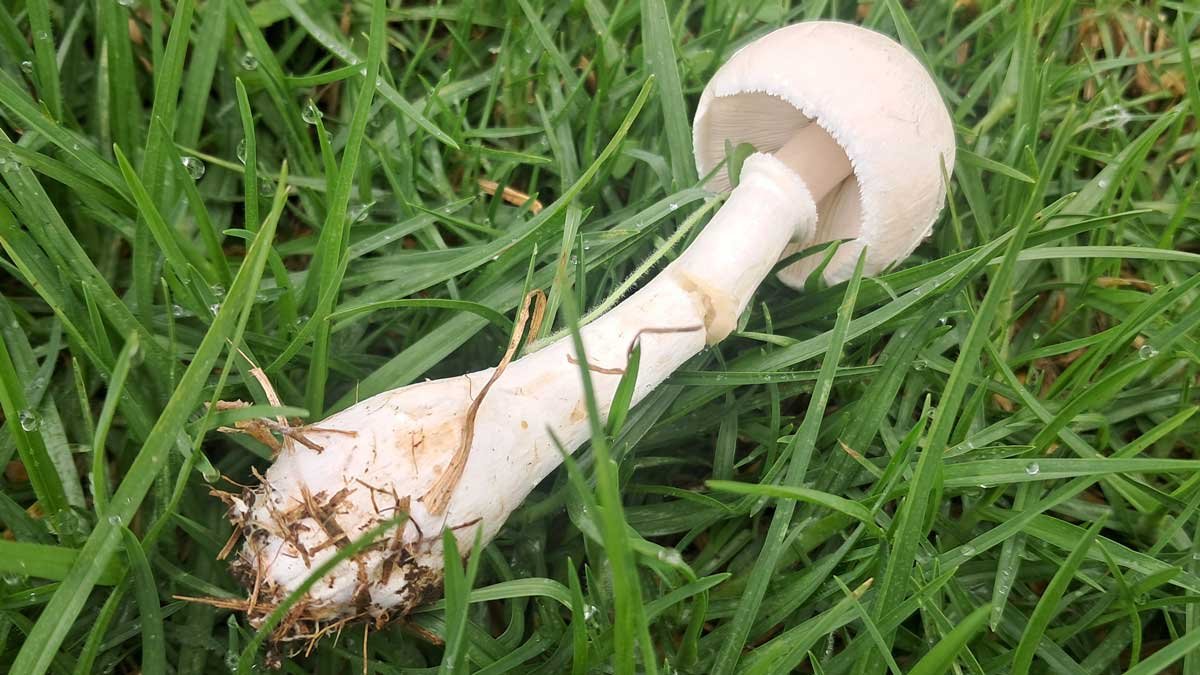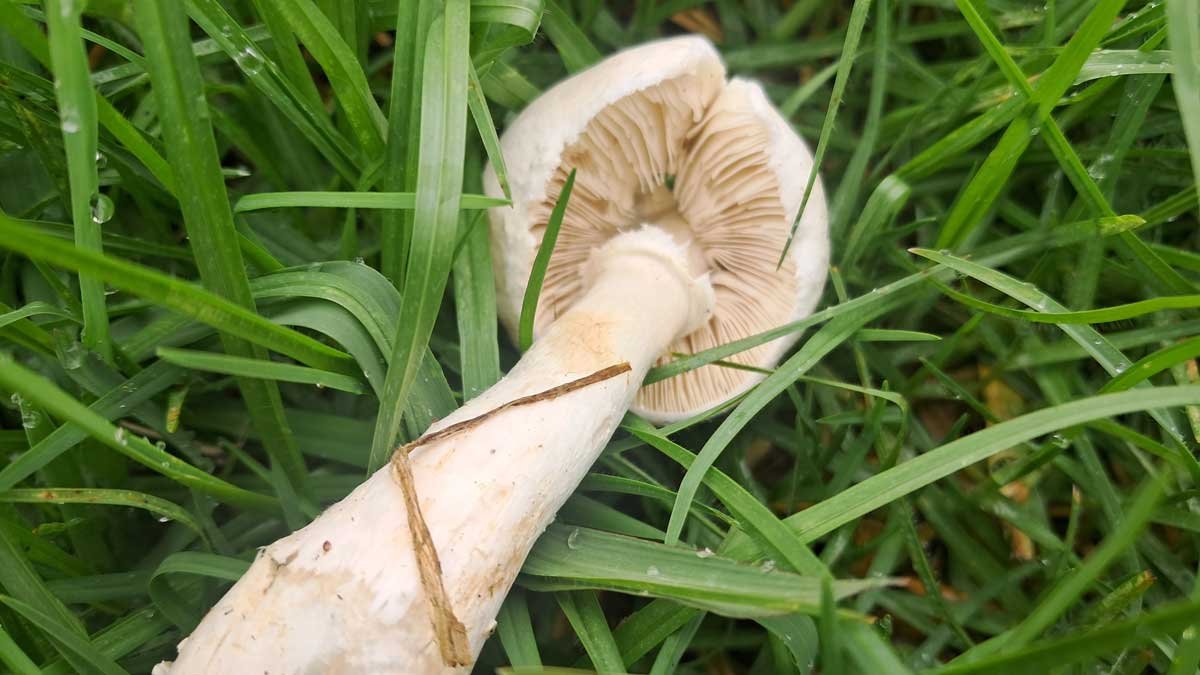Back in autumn 2020, we got some wonderful flushes of edible field mushrooms. They popped up in our ‘main paddock’ and – heading into lockdown at the time – I was pretty delighted to find this staple growing happily in my “back yard”.
In 2021, we got another small flush and I briefly wrote about them. But then in 2022 and 2023, we basically got nothing. It felt like the field mushrooms had just… died.
I wondered what I had done. Maybe spraying out the ragwort and gorse had killed them off? Had we damaged them somehow by picking them wrong? We searched each year, but we just never found them. It was a bit sad.
Then a couple of weeks ago, we got a really good dousing of rain – the first good dump since Christmas. And in the days that followed, we got mushrooms. Lots and lots of wild edible mushrooms.
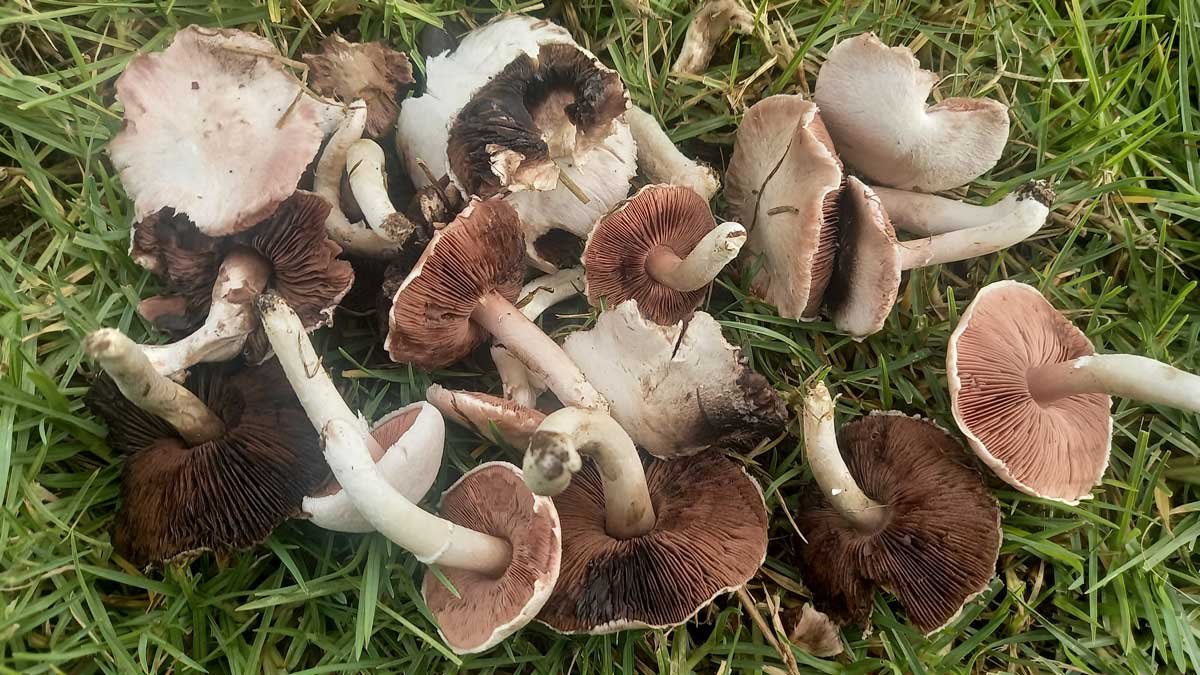
In 2024, we have a couple of dogs that adore playing fetch on the paddocks.
Maybe it’s that we’re out there more as a result. But lately, whenever Richard and I are out throwing the ball for the dogs, we’re also harvesting an absolute mountain of mushrooms.
A good reference
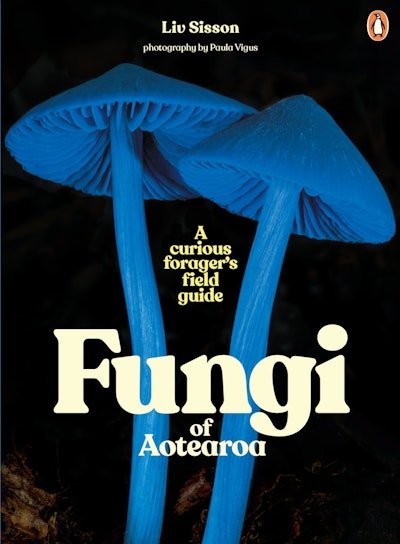
This is my mandatory note that if you’re going to go out and forage wild mushrooms, you should be very sure about what it is you’re harvesting.
I was given a copy of Fungi of Aotearoa by Liv Sisson for my birthday and it has quickly become one of my favourite reference books. It’s an absolutely stunning book that will help you to identify a wide range of fungi in New Zealand. I highly recommend it.
Whether you use this, or another reference – always double check and positively identify every individual mushroom you plan to eat.
Identifying Agaricus mushrooms
I’m not totally sure what kind of mushroom we’ve got – it’s an Agaricus of some sort. Fungi of Aotearoa lists field mushrooms and horse mushrooms in this family.
It seems to align closer with horse mushrooms. While we have picked up a couple of large ones, they’re usually on the smaller side. They also have a partial veil that uncovers the gills.
But I wouldn’t describe them as ‘meaty’ like the book does. Instead, they are mostly gills which put spores all over my kitchen and dye all our food black.
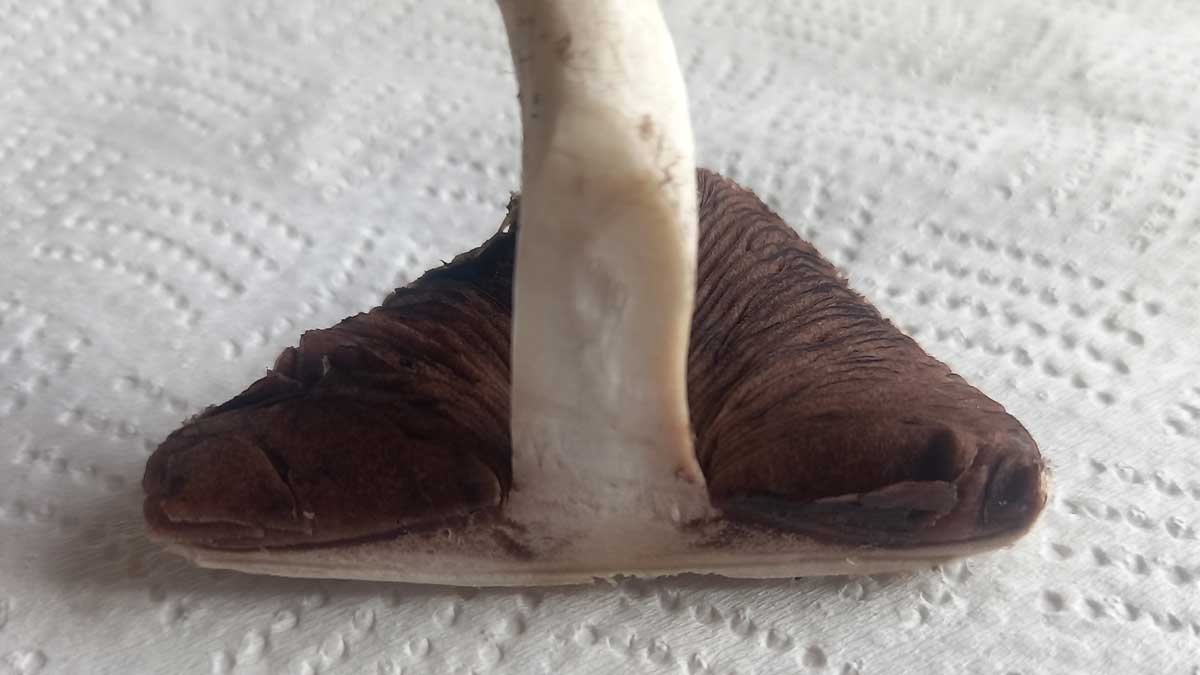
And it’s those gills that give me the first clue that the mushrooms are edible.
The colour varies depending on the maturity of the mushroom, but pink-brown-black gills are an identifying feature of Agaricus mushrooms.
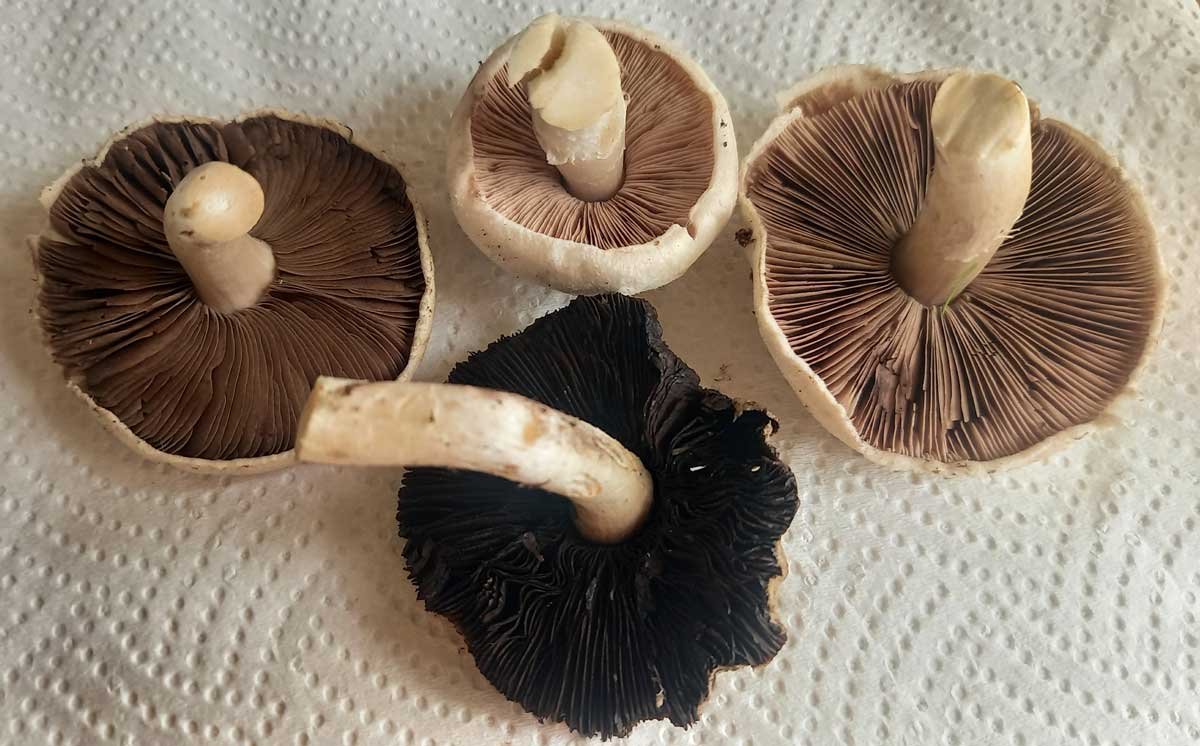
The second test I usually apply is to see what colour the mushrooms ‘bruise’. It should be pinky-red.
I test this by cleaning them up and placing them on a paper towel. Usually the paper towel picks up a pink stain – that’s another sign my mushrooms are edible.

The third test is a negative test. The two mushrooms I want to prove it’s not are death caps and yellow stainers.
Yellow stainers are disproved by the pink staining – if they were yellow stainers, the stain would be – well, yellow. They’d also smell like chlorine.
Death caps (Amanita phalloides) are disproved in two ways. Firstly by the gills – white gills would be a warning to me to avoid that mushroom. Secondly, the stem gets much fatter and rounder at the bottom.
Watch out for these ones!
If you are familiar with picking edible mushrooms, there is a different ‘feel’ to picking a death cap. It’s hard to explain, but to someone experienced, it’ll be the first sign you’ve got the wrong mushroom. If it feels a bit different to pick, take a closer look.
In 2025, we got a flush of suspected Amanita mushrooms and I came back to expand this section with more information. As you approach a death cap, they look almost exactly like the image of edible mushrooms at the top of this post.
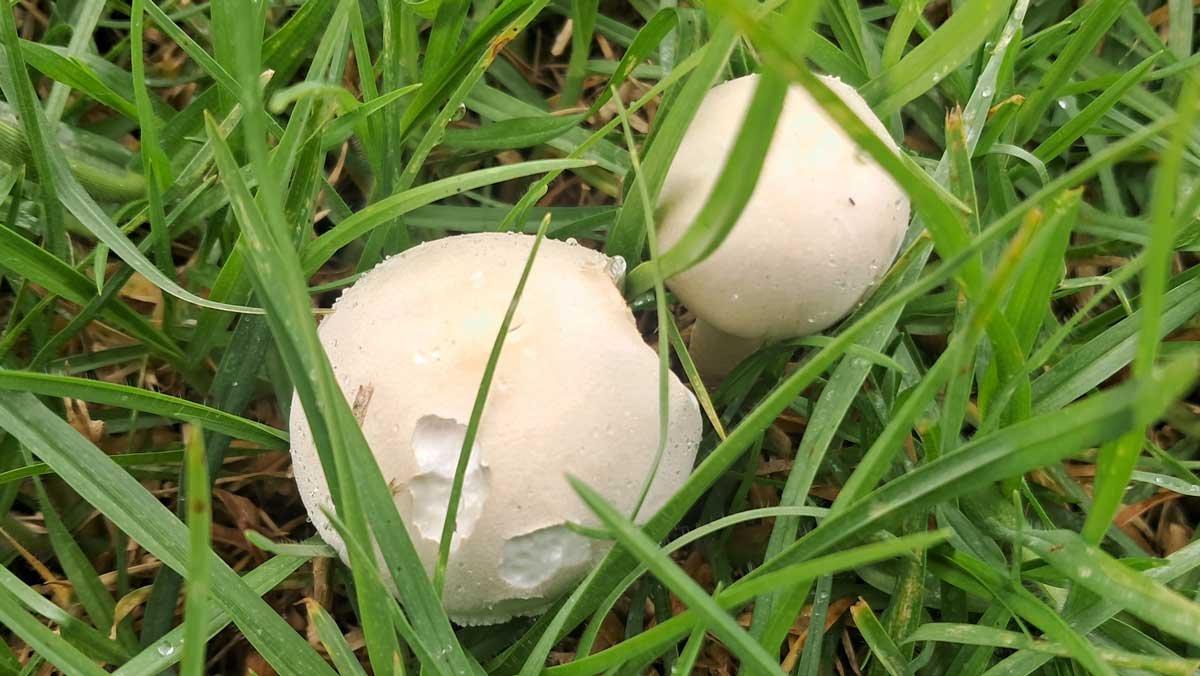
Except there’s a really good chance these are not edible, and probably deadly.
After picking them and looking at the gills and stem, they are very clearly not the mushroom we are looking for.
As well as the white gills, the stems look different. Edible mushroom stems have a uniform width from the top to the bottom. This one was fatter at the bottom, and more rounded.
But that’s not what I saw with my original mushrooms. Having taken them through each of these tests, I was convinced they were edible field mushrooms. And the fact I was still around a year later to write this edit backs that up.
However while I’m not completely sure exactly what species of mushroom these are, I know I’m not going to risk eating them.
Other edible mushrooms
Agaricus aren’t the only edible mushroom we’ve got here. I’ve seen oyster mushrooms growing in the bush (though they are much harder to find).
We’re yet to beat the slugs to them, but in 2024 we also learned our pine nut tree is hosting Slippery Jacks.
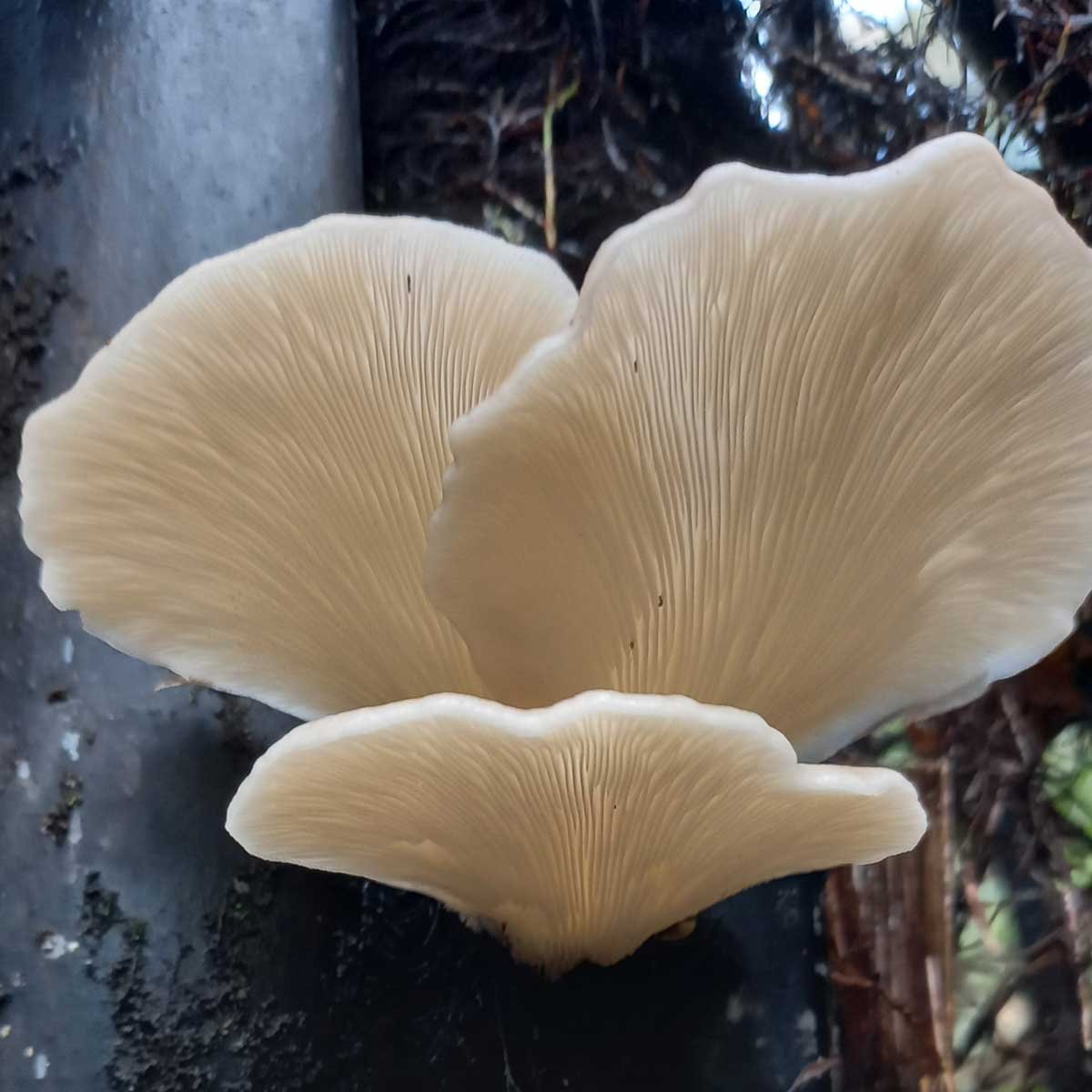
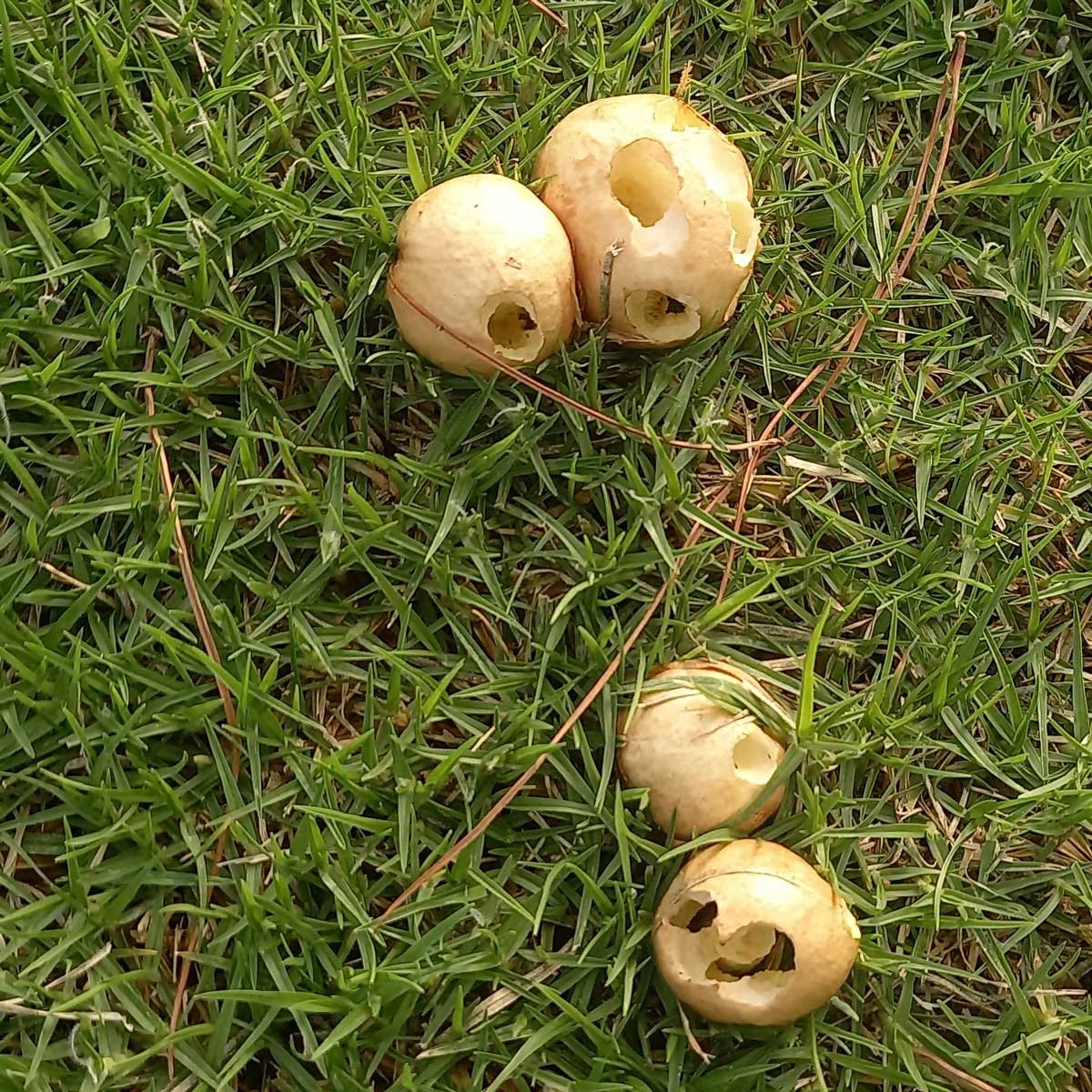
I have seen historical record that our property has grown Hakeke (Wood Ear mushrooms) too. Or at least it did in the late 19th Century.
I’m yet to see them in my forages, but I am keeping an eye out.
Still a hurdle
The basic lesson I received as a child was all wild fungi are poisonous. I don’t disagree with that as a sweeping rule for a child, but I took that very seriously. And that serious and literal interpretation leaves me with a small problem now.
Even though we spent Easter holidays at our grandparent’s house harvesting wild mushrooms off the domain and I knew there were exceptions to the rule, my first instinct is that every mushroom I come across is going to kill me.
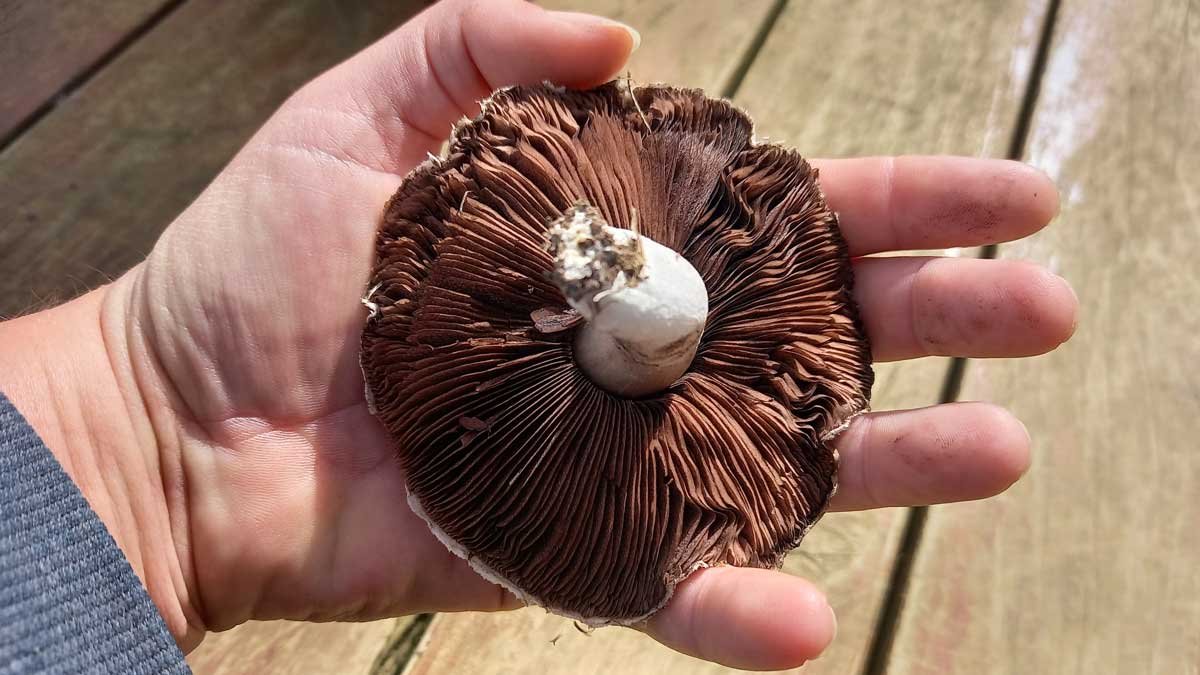
As a child and young adult, I hated mushrooms, so it wasn’t a big deal. I’m still not their biggest fan, but it turns out I really enjoy the hunt. Foraging mushrooms is where the fun is at. The eating of them is still a little bit of a struggle.
I’ve been preparing and eating meals with these mushrooms for the last couple of weeks. I’ve given them to others. I know they’re fine from experience and because I double check every time.
But to be honest with you, there is still some part of me that wonders if each mushroom meal I prepare will be my last. There’s still some kind of hangover from the lessons of my youth and it’s hard to let that go.
An ethereal crop
Mushrooms are the kind of thing you just have to enjoy while they’re around, I guess.
While we know they’ll flush in autumn – usually after a good rain – we can’t be sure they’ll be there every year. I’ve come to wonder if El Niño and La Niña maybe play some kind of role here too.
But the truth is, I don’t know. I don’t know when they’ll grow, and I also don’t know how long they’ll grow for. I’ve got a bit of an idea about where they’ll be, but each time I go out there to harvest, I’m aware that it could be the last for a while.
We’re lucky – we don’t have to share our foraging sites with anyone. There’s an unbelievable privilege to having unfettered access to a paddock, or a piece of native bush – the potential to forage is huge, especially in mushroom season.
Right now, there’s more mushrooms popping up each day than we can practically eat. So I’ve begun drying them.
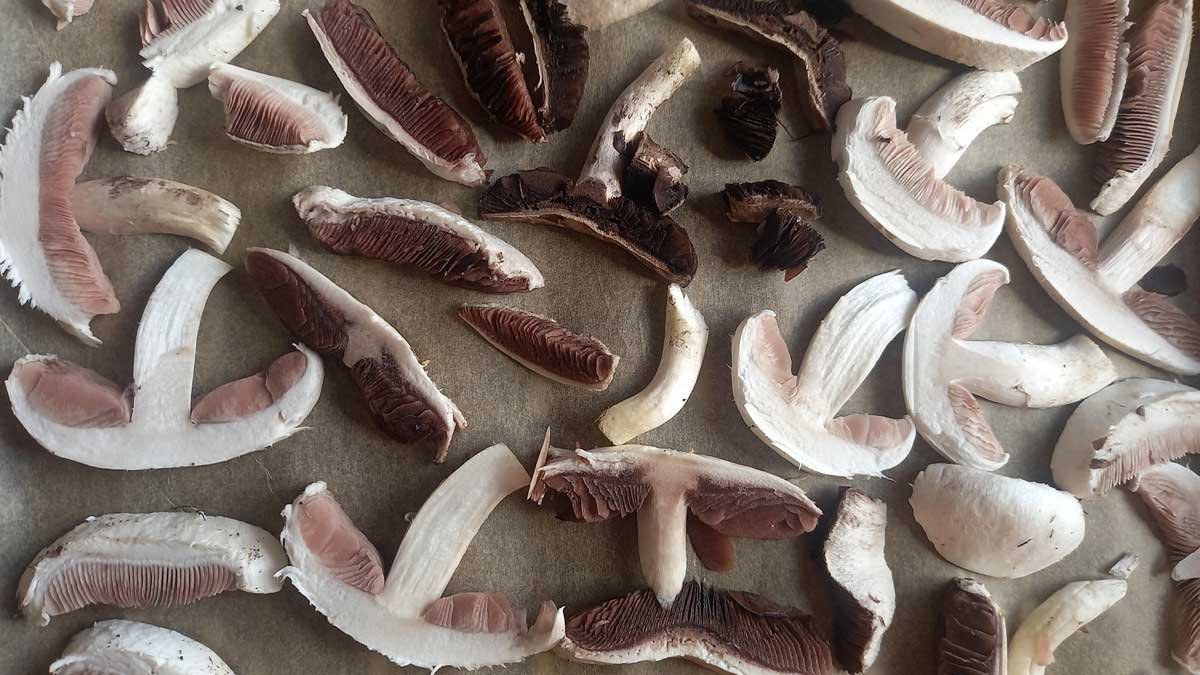
I slice them up and place them in a single layer on baking paper, then dry in the oven at 70ºC.
It pays to flip them over and blot them with a paper towel after the first hour. And it takes about 3 or 4 hours overall.
I’m thinking about building a solar dehydrator to reduce the energy input and make this a more passive exercise.
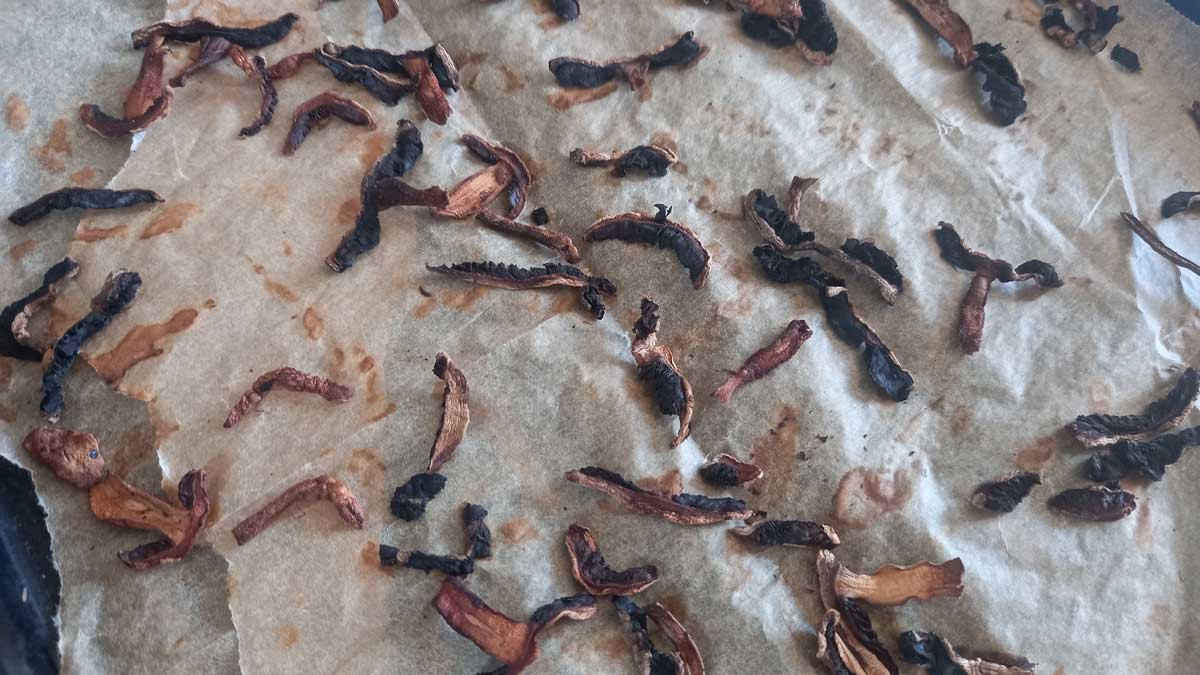
So far I’ve turned a full ice cream container of fresh mushrooms into half a jam jar of dried ones.
I’ll be able to rehydrate them to add flavour to my cooking throughout the coming year, and save us a little money on the grocery bill.
The joy of the mushroom hunt
Foraging mushrooms is a delightful activity. Slowly walking around looking for those lumpy white gems amongst the grass is fun and exciting.
It’s also a bit scary. The potential to get it wrong – especially when you’re encountering something new – is high. And the consequences can be pretty dire.
Still, the thrill of hunting mushrooms is a nice consolation as we say goodbye to summer and head into winter again. At least our slow-cooked winter meals will taste incredible this year.

